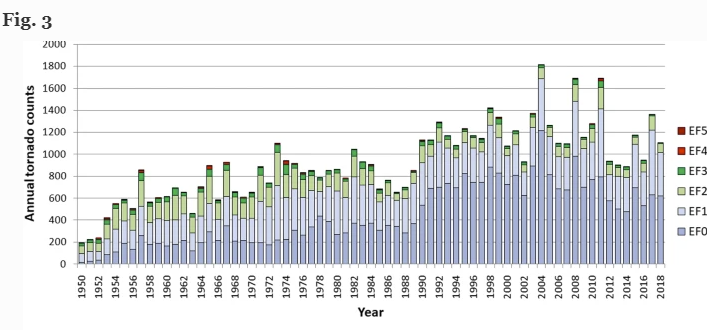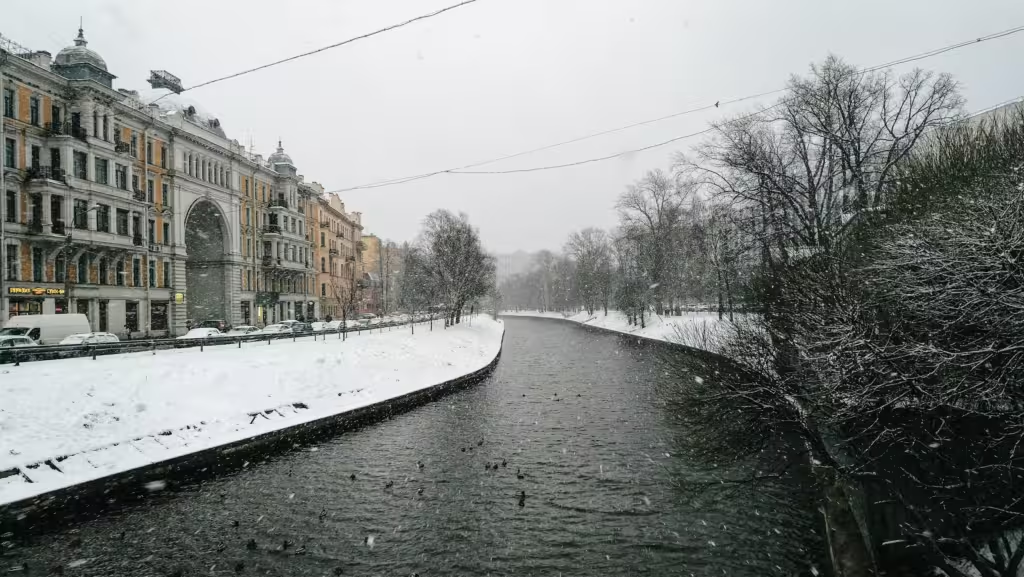Last week we drew attention to a new, detailed peer-reviewed analysis of extreme weather trends. Yes, yes, very boring, we all know there’s nothing to report. But the trouble is we don’t all know. CDN followers know, but many others apparently have the wrong idea. So we’re working our way through the latest data, this week on tornadoes. According to the authors “A tornado is a vortex extending upward from very near the surface at least as far as cloud base (with cloud base associated with deep moist convection, typically a cumulonimbus cloud), that is intense enough at the surface to do damage.” The USA gets a lot of them and has the best long term data. The data show an apparent upward trend--but there’s a catch. Prior to the installation of Doppler radar and the advent of smartphones with everyone wanting selfies with a funnel cloud in the background most small tornadoes were never counted or recorded. Adjust for that change and the picture looks very different.
The raw data look like this:

The chart shows all tornadoes sorted by their severity on the Enhanced Fujita (EF) scale from 0 (smallest) to 5 (largest). The apparent growth is entirely due to the EF0-EF2 events, which are the hardest to detect. With increased population, radar and cell phones many small tornadoes now get recorded that would have been missed prior to 1980. The large tornadoes (EF3-EF5) tended to be counted accurately even back in the 1950s, because an occurrence couldn’t be missed at the time and was easier to confirm afterwards due to the characteristic damage even in uninhabited regions. That portion of the data set looks like this:

Not only is the count not going up, if anything it is going down. So what’s the connection with climate? The authors point out that climate models don’t predict or resolve tornadoes since they occur on too small and brief a scale. So no one knows. They might increase or decrease or not change at all. As far as the trends go, there is no reliable evidence of an upward trend in occurrence. More small tornadoes are recorded now than in past decades, because monitoring systems are better. So you are about as likely to experience a tornado now as you would have been back in the 1950s.
You and your little dog too.


